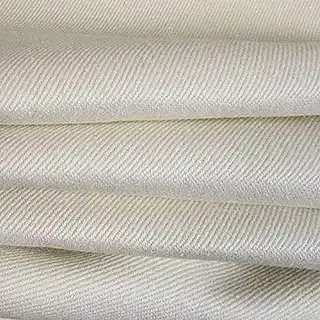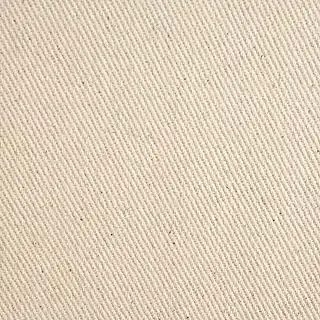Introduction
Cotton twill fabric is a versatile and widely used textile known for its distinctive diagonal pattern. It has been popular for centuries due to its durability, comfort, and aesthetic appeal. This article explores the various aspects of cotton twill fabric, including its characteristics, manufacturing process, different weave variations, typical applications, care instructions, pros and cons, and sustainable and eco-friendly aspects. Whether you are a fashion enthusiast, a textile industry professional, or simply curious about this fascinating fabric, read on to discover the fascinating world of cotton twill fabric.
What is Cotton Twill Fabric?
Cotton twill fabric is a versatile and popular textile known for its diagonal ribbed pattern. It is made from cotton fibers woven using the twill weave technique, resulting in a sturdy and comfortable fabric. This type of fabric has been used for centuries in various applications due to its durability and unique appearance.
Historical Background
The origins of cotton twill fabric can be traced back to ancient civilizations, such as the Egyptians and the Aztecs, who were among the first to develop textile weaving techniques. Twill weaves were created to enhance the strength and flexibility of fabrics, making them suitable for various purposes, from clothing to sails and upholstery. Cotton twill fabric gained popularity over time and became essential in practical and stylish garments.
Characteristics and Properties of Cotton Twill Fabric
i. Texture and Feel
One of the distinguishing characteristics of cotton twill fabric is its distinctive texture. The diagonal weave creates a ribbed pattern, giving the fabric a unique visual appeal. In terms of feel, cotton twill is soft and comfortable against the skin, making it a popular choice for clothing items like pants, jackets, and shirts.
ii. Durability and Strength
Cotton twill fabric is renowned for its durability and strength. The diagonal structure of the twill weave enhances the fabric's resistance to wear and tear, making it suitable for heavy-duty applications. This robustness allows garments made from cotton twill to withstand frequent use and maintain quality over time.
iii. Breathability and Comfort
Despite its durability, cotton twill fabric remains breathable and comfortable to wear. The natural fibers that create cotton twill allow air to circulate freely, preventing the fabric from trapping heat and moisture. This breathability contributes to a comfortable wearing experience, especially in warmer climates or during physical activities.
iv. Color Fastness
The cotton twill fabric has excellent color fastness, meaning it retains its colors even after repeated washing and exposure to sunlight. This property ensures that garments made from cotton twill retain their vibrant hues for longer, enhancing their overall appearance and longevity.
Manufacturing Process of Cotton Twill Fabric
i. Cotton Selection and Preparation
The process of manufacturing cotton twill fabric begins with the selection of high-quality cotton fibers. The cotton is carefully cleaned and processed to remove impurities, ensuring smoothness and evenness in the resulting fabric.
ii. Twill Weaving Technique
The twill weaving technique is employed to create the characteristic diagonal pattern of cotton twill fabric. This technique involves passing the weft thread over multiple warp threads and then under one or more. This sequence is repeated, offsetting each row to produce the diagonal ribs that give cotton twill its unique appearance.
iii. Finishing Treatments
After the twill weave is complete, the fabric undergoes various finishing treatments to enhance its properties. These treatments can include processes such as bleaching, dyeing, and softening to achieve the desired color and texture. The finishing treatments also contribute to the fabric's overall quality and longevity.
Different Types and Variations of Cotton Twill Weaves
i. Standard Twill Weave
The standard twill weave is the most common type of cotton twill fabric. It features a diagonal pattern created by passing the weft thread over two or more warp threads and then under one or more warp threads. This classic twill weave is versatile and can be found in a wide range of cotton twill products.
ii. Herringbone Twill
Herringbone twill is a variation of the standard twill weave. It gets its name from the distinctive V-shaped pattern resembling a herringbone fish skeleton. The V-shape is created by reversing the direction of the twill weave after a few rows, producing a zigzag effect. Herringbone twill is often used in garments like suits and coats, adding a touch of sophistication.
iii. Twill Satin
Twill satin, or sateen weave, combines the twill weave with a satin weave structure. This results in a smooth and glossy fabric with a subtle sheen. Twill satin cotton twill fabric is often used for luxurious bedding, elegant drapery, and refined apparel that requires a lustrous appearance.
iv. Diagonal Twill
Diagonal twill is a variation in the twill weave where the diagonal ribs are more pronounced and steep. This creates a bold and visually striking fabric that can add drama and personality to various clothing items. Diagonal twill cotton fabric is often chosen for statement pieces like skirts, dresses, and accessories, making a fashionable impact.
Typical Applications and Uses of Cotton Twill Fabric
i. Apparel Industry
Cotton twill fabric is a staple in the apparel industry due to its versatility and durability. It is commonly used for making pants, jackets, skirts, and dresses. Its characteristic diagonal weave adds a touch of style to any outfit, making it a popular choice among fashion designers and clothing manufacturers.
ii. Home Furnishings
Cotton twill fabric is also widely used in the home furnishings industry. Its strong and durable nature makes it suitable for upholstery, slipcovers, curtains, and pillow covers. The diagonal twill pattern adds texture and visual interest to home decor, giving it a cozy and inviting feel.
iii. Workwear and Uniforms
Thanks to its durability and resistance to wear and tear, cotton twill fabric is a popular choice for workwear and uniforms. From construction workers to chefs, many professionals rely on cotton twill for its ability to withstand the demands of their jobs. Its comfortable and breathable properties make it a practical choice for long hours of wear.
iv. Accessories and Bags
Cotton twill fabric is not limited to clothing and home furnishings; it is also used in the creation of accessories and bags. The sturdy material can be found in backpacks, tote bags, hats, and shoes. Its reliability and classic appearance make it a go-to option for accessories that must withstand daily use.
Care and Maintenance of Cotton Twill Fabric
i. Washing Instructions
When washing cotton twill fabric, following the care instructions on the garment's label is best. Machine washing on a gentle cycle with mild detergent is generally recommended. Avoid using bleach or harsh chemicals that may weaken the fabric. Separating dark and light-colored items is also advisable to prevent color transfer.
ii. Drying and Ironing Recommendations
After washing, cotton twill fabric can be air-dried or tumble-dried in a low-heat setting. Avoid high heat as it can cause shrinkage or damage to the fabric. To reduce wrinkles, iron the fabric in a medium-temperature setting. Use a pressing cloth to protect the fabric from direct heat if necessary.
iii. Stain Removal Techniques
To tackle stains on cotton twill fabric, it is best to treat them promptly. Blot the stain with a clean cloth or paper towel to remove excess liquid or debris. Then, gently dab the stained area with a mild detergent or stain remover. Allow the solution to sit briefly before rinsing with cold water. For tough stains, repeat the process or seek professional cleaning assistance.
Pros and Cons of Cotton Twill Fabric
i. Advantages of Cotton Twill Fabric
One of the significant advantages of cotton twill fabric is its durability. It can withstand regular wear and tear, making it a reliable choice for various applications. Additionally, cotton twill is breathable and comfortable, ensuring a pleasant experience even during extended periods. Its diagonal weave adds a touch of sophistication to any garment or home decor item.
ii. Disadvantages of Cotton Twill Fabric
Despite its many advantages, cotton twill fabric does have some drawbacks. It has a tendency to wrinkle easily, so frequent ironing or steaming may be necessary to maintain a neat appearance. Additionally, cotton twill can absorb and retain moisture, which may lead to longer drying times after washing.
Sustainable and Eco-friendly Aspects of Cotton Twill Fabric
i. Organic Cotton Twill
For those concerned about sustainability, organic cotton twill is a fantastic option. It is grown without synthetic fertilizers or harmful pesticides, promoting soil health and reducing water pollution. Choosing organic cotton twill helps support sustainable agricultural practices and reduces the environmental impact of cotton production.
ii. Water and Energy Consumption
Compared to synthetic fabrics, cotton twill has a relatively low environmental impact regarding water and energy consumption. However, it is still essential to be mindful of water usage during manufacturing and opt for eco-friendly production methods whenever possible.
iii. Recycling and Upcycling
Like most cotton-based materials, cotton twill fabric can be recycled or upcycled into new products. Recycling cotton reduces the need for new raw materials and minimizes waste. Upcycling old cotton twill garments or scraps into new items reduces waste and adds a unique and creative touch to fashion and home decor.
Conclusion
Cotton twill fabric continues to be a beloved textile in various industries and applications. Its unique diagonal weave and its excellent durability and comfort make it a go-to choice for clothing, home furnishings, and more. By understanding the manufacturing process, care instructions, and different variations of cotton twill fabric, you can make informed choices when incorporating it into your lifestyle. Moreover, with a growing focus on sustainability, exploring organic and eco-friendly options further enhances the appeal of this timeless fabric. Embrace the versatility and charm of cotton twill fabric and enjoy its enduring qualities for years.
Some Special Questions
1. Is cotton twill fabric suitable for all seasons?
Yes, cotton twill fabric is suitable for all seasons. It is known for its breathability, which allows air to circulate, keeping you cool in hot weather. At the same time, the fabric's substantial weight provides warmth and insulation during colder months. It is a versatile fabric that can be worn comfortably year-round.
2. Can I machine wash cotton twill fabric?
Yes, cotton twill fabric is generally machine washable. It is recommended to check the care instructions provided by the manufacturer to determine the appropriate washing temperature and any specific guidelines. In most cases, using a gentle cycle with mild detergent and avoiding harsh chemicals or bleach will help maintain the fabric's quality and longevity.
3. Can cotton twill fabric be used for upholstery?
Yes, cotton twill fabric is commonly used for upholstery. Its durability and strength make it suitable for furniture upholstery, cushions, and other home furnishing applications. Additionally, the rich texture and wide range of colors available in cotton twill can add a touch of elegance to any interior space.
4. Is cotton twill fabric environmentally friendly?
Cotton twill fabric can be environmentally friendly, especially when made from organic cotton or manufactured using sustainable practices. Organic cotton twill is grown without harmful pesticides or genetically modified seeds, making it a more eco-conscious choice. Additionally, some manufacturers implement water and energy-saving techniques in production, reducing the fabric's environmental impact. When purchasing cotton twill fabric, it is recommended to look for certifications or labels that indicate sustainable and eco-friendly practices.








0 Comments